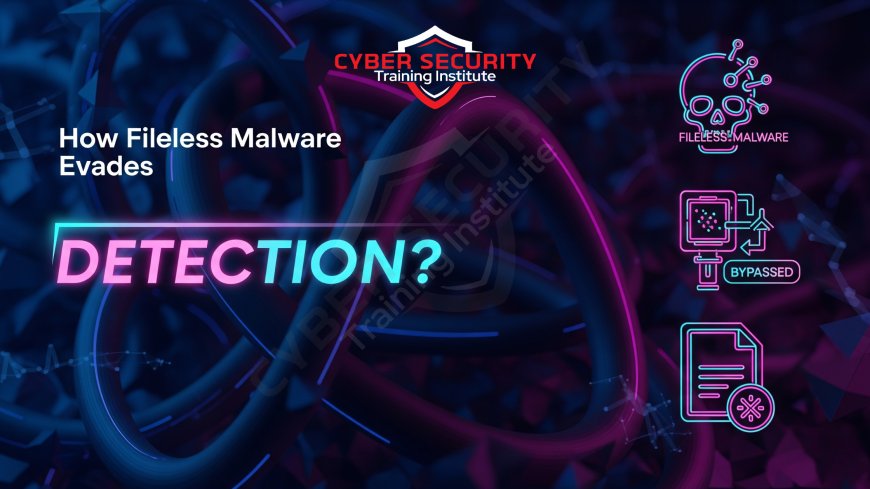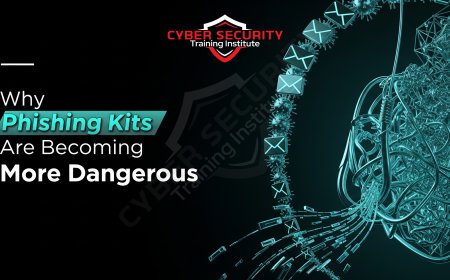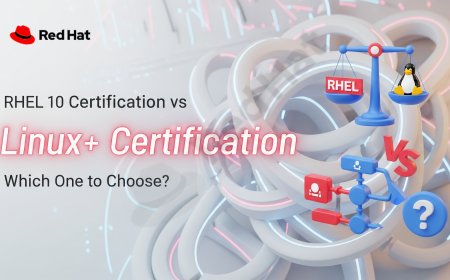How Fileless Malware Evades Detection
Fileless malware has become the ghost in the modern machine, a sophisticated category of threat that evades detection by breaking the fundamental rule of traditional security: it leaves no malicious file on the disk. This in-depth article explains how these stealthy attacks work and why they are so effective at bypassing conventional antivirus software. We break down the core principle of fileless attacks, the "living off the land" technique, where attackers hijack legitimate, trusted system tools like PowerShell and WMI to carry out their malicious operations in plain sight. Discover the clever, non-file-based methods these threats use to achieve persistence and survive a system reboot. The piece features a comparative analysis that clearly contrasts the characteristics of traditional file-based malware with these new, behavior-based fileless threats. We also explore the critical challenge this presents to modern Security Operations Centers (SOCs) and why the rise of fileless malware has made Endpoint Detection and Response (EDR) an essential, non-negotiable security tool for any enterprise. This is a must-read for any security professional or IT leader who needs to understand one of the most pervasive and evasive threats in the current cybersecurity landscape.

Introduction: The Ghost in the Machine
For decades, we've been taught to think of malware as a malicious file—a virus-laden document, a suspicious `.exe`, or a trojan that we can scan, find, and delete. But what if the malware was never a file to begin with? This is the new reality of "fileless malware." It's a ghost in the machine, a category of sophisticated threat that runs its entire operation without leaving a traditional, tell-tale footprint on the hard drive. This lack of a file is the key to its incredible stealth and effectiveness. Fileless malware evades detection by avoiding the disk and running directly in a computer's memory, by hijacking legitimate, trusted system tools to carry out its attacks, and by establishing persistence through non-file-based methods, making it completely invisible to traditional antivirus software.
The Core Principle: Avoiding the Hard Disk
The entire philosophy of fileless malware is built on a single, brilliant evasion tactic: exploiting the blind spot of traditional security tools. For years, the primary job of an antivirus (AV) program has been to act as a file scanner. It scans the files on your hard drive, and when you download a new file, it checks that file's "signature" (its digital fingerprint) against a massive database of known malware. If there's a match, the file is blocked or deleted.
Fileless malware is specifically designed to make this entire process irrelevant. Since the malware never writes a malicious executable file to the disk, there is nothing for the traditional AV scanner to find. The attack often starts with an exploit, perhaps from a malicious website or a macro in a document, that runs a command directly in the computer's volatile memory (RAM). This initial in-memory process then kicks off the rest of the attack, with the entire malicious operation living and breathing within the system's memory, never touching the hard drive where the traditional security guards are watching.
The Primary Tactic: "Living Off the Land" (LotL)
So if the malware doesn't bring its own malicious files, how does it actually do anything? It "lives off the land." This is a technique where the attacker doesn't need to bring their own suspicious-looking hacking tools; they simply use the powerful, legitimate, and trusted administrative tools that are already built into the operating system. By hijacking these native tools, the malware's activity is perfectly camouflaged as normal, everyday administrative work.
The most common "living off the land" tools that are hijacked are:
- PowerShell: This is the number one tool for fileless attacks on Windows. PowerShell is an incredibly powerful command-line and scripting engine that is built into the OS. Attackers can use it to run complex scripts, download further payloads directly into memory, and move through a network, all without writing a single file to the disk.
- Windows Management Instrumentation (WMI): WMI is a core feature of Windows that allows administrators to manage and monitor devices and applications. Attackers can abuse WMI to execute commands, schedule malicious tasks to run at a later time, and gather information about the system.
- The System Registry: The Windows Registry is a massive database that stores configuration settings for the operating system. Attackers have found that they can store small, malicious scripts or configuration data within the registry itself, using it as a stealthy hiding place to be called upon later.
.
The Persistence Trick: How Fileless Malware Survives a Reboot
Since the malware is running in volatile memory (RAM), what happens when the computer reboots? Normally, everything in RAM is wiped, which would kill the malware. To solve this, attackers have developed a range of stealthy, non-file-based methods to achieve "persistence," which is the ability to automatically start again after a reboot.
Instead of creating a malicious file in a standard startup folder, fileless malware uses the operating system's own configuration databases as a hiding place. The most common techniques are:
- Registry Run Keys: This is the most popular method. An attacker can add a small, often obfuscated, one-line script to a specific "Run" key in the Windows Registry. The operating system is designed to automatically execute anything in these keys every time a user logs in. This allows the attacker's in-memory agent to be re-launched after every reboot.
- WMI Event Subscriptions: This is a more advanced and stealthy technique. An attacker can create a permanent WMI "event subscription." This is a rule that tells the system to run a malicious script in response to a common, everyday system event, such as a user logging in or a certain amount of time passing. This is very difficult for traditional security tools to detect, as it looks like a legitimate system management configuration.
Comparative Analysis: File-Based vs. Fileless Malware
Fileless malware is a fundamentally different class of threat that requires a completely different defensive mindset.
| Characteristic | Traditional File-Based Malware | Fileless Malware |
|---|---|---|
| Footprint on Disk | Leaves a malicious executable file (e.g., a `.exe` or `.dll`) on the hard drive. This file is its primary, detectable artifact. | Leaves no malicious files on the disk. Its primary artifact is the malicious process running in the system's volatile memory (RAM). |
| Primary Detection Method | Is primarily detected by signature-based file scanning, which is the core function of traditional antivirus software. | Can only be detected by behavioral analysis, memory scanning, and the continuous monitoring of legitimate system tools (the core function of modern EDR). |
| Tools Used | Brings its own, custom-built malicious tools and executables to the victim's machine. | "Lives off the land." It hijacks the legitimate, trusted, and pre-installed system tools like PowerShell and WMI to carry out its attack. |
| Persistence Mechanism | Achieves persistence by placing a malicious file in a system startup folder or by creating a new, malicious system service. | Achieves persistence through non-file-based methods, such as creating a malicious entry in the Windows Registry or a WMI event subscription. |
| Primary Evasion Tactic | Relies on obfuscation and polymorphism to constantly change the appearance of its file to try and fool the file scanners. | Relies on evasion by its very nature. It has no file to be detected in the first place, and it hides its activity by making it look like legitimate administrative work. |
The Challenge for Modern Security Operations
For a modern Security Operations Center (SOC) in any large enterprise, fileless malware represents a significant and daily challenge because it is specifically designed to bypass the first and most common layer of their defenses: traditional antivirus. When an AV is blind to an attack, the security team is then forced to rely on much more difficult and time-consuming methods to find the threat. They have to try and manually hunt for the one suspicious PowerShell command among the thousands of legitimate ones that are run every day in a large corporate network. This is a nearly impossible manual task.
This is precisely why the industry has had to evolve beyond traditional antivirus. The rise of fileless malware was the primary driver for the creation of Endpoint Detection and Response (EDR) tools. An EDR platform is specifically designed to deal with this threat. It doesn't just scan files; it continuously records and analyzes the behavior of every single process on an endpoint, including the legitimate tools like PowerShell. It uses AI and behavioral analytics to find the anomalous patterns and the specific Tactics, Techniques, and Procedures (TTPs) that indicate a fileless attack is in progress.
Conclusion: Fighting a Threat You Can't See
Fileless malware achieves its incredible stealth by breaking the fundamental assumption that has underpinned our security tools for decades: the assumption that the enemy is a file. By running entirely in memory, living off the land, and using non-file-based persistence mechanisms, it can slip past the old security guards with ease. The rapid growth of these techniques means that traditional antivirus, while still having a role to play, is no longer sufficient as a primary endpoint defense in any modern enterprise.
The only way to fight a threat that has no file is with a defense that can look beyond files. The future of endpoint security is, and must be, centered on behavioral analysis. This is a paradigm that is embodied by modern EDR tools. These tools can finally spot the ghost in the machine, not by looking for its footprint, but by watching what it does.
Frequently Asked Questions
What is fileless malware?
Fileless malware is a type of malicious software that exists exclusively in a computer's memory (RAM) and does not write any files to the hard drive. This allows it to evade detection by traditional antivirus software that scans for malicious files.
What does "living off the land" (LotL) mean?
"Living off the land" is a technique where an attacker uses the legitimate, pre-installed tools and processes on a system (like PowerShell) to carry out their attack, which helps them to blend in with normal administrative activity.
What is PowerShell?
PowerShell is a powerful command-line shell and scripting language built into Windows. While it is a legitimate and essential administration tool, it is also the most commonly abused tool for fileless attacks.
What is WMI?
WMI, or Windows Management Instrumentation, is a core component of Windows that provides a standardized way for administrators to manage and monitor local and remote computers. Attackers can abuse WMI to execute commands and maintain persistence.
How can malware run without a file?
An attack often starts with an exploit (e.g., in a browser or a document macro) that runs a piece of code directly in the computer's memory. This in-memory code can then download and run other scripts and commands without ever needing to save a file to the disk.
What is the Windows Registry?
The Registry is a hierarchical database in Windows that stores low-level settings for the operating system and for applications. Attackers can hide malicious scripts or startup commands within the Registry to achieve fileless persistence.
What is an EDR tool?
EDR stands for Endpoint Detection and Response. It is a modern security solution that continuously monitors endpoints (like laptops and servers) for suspicious behavior, rather than just scanning for known malicious files. It is the primary defense against fileless malware.
Why is traditional antivirus not enough anymore?
Because traditional antivirus is primarily a file scanner. It is designed to look for the "signatures" of known malicious files. Since fileless malware has no file, the antivirus scanner has nothing to find.
What is a TTP?
TTP stands for Tactics, Techniques, and Procedures. It refers to the patterns of behavior of a threat actor. Modern security tools focus on detecting TTPs, not just the specific tools (IOCs) the attacker uses.
What is "persistence" in malware?
Persistence is the technique that malware uses to ensure that it automatically starts again after the computer has been rebooted. Fileless malware uses stealthy, non-file-based methods, like Registry keys, to achieve this.
What is RAM?
RAM, or Random Access Memory, is the computer's short-term, "volatile" memory. It is where all active programs and processes are run. The data in RAM is erased when the computer is turned off.
Can fileless malware steal my data?
Yes. A primary goal of a stealthy, fileless attack is to remain in a network undetected for a long period to slowly exfiltrate large amounts of sensitive data without triggering any alarms.
Is this a new type of threat?
The concepts have been around for a long time, but the use of these techniques has exploded in recent years as attackers have realized how effective they are at bypassing traditional security.
What is an exploit?
An exploit is a piece of code that takes advantage of a bug or vulnerability in a piece of software to cause an unintended behavior, such as running a command directly in memory.
How does a fileless attack usually start?
The initial entry vector is often the same as any other attack. It could be a malicious macro in a phishing document, a link to a malicious website that exploits a browser vulnerability, or any other method that allows the attacker to run an initial command on the system.
What is a "process chain"?
A process chain is the sequence of processes that are spawned by a parent process. For example, a user opens Word, which then runs a macro, which then spawns PowerShell. EDR tools analyze these process chains to spot malicious behavior.
Can fileless malware be polymorphic?
Yes. The in-memory scripts used by fileless malware can be obfuscated and changed for each victim, making them even harder to detect with any kind of signature-based memory scanning.
What is a SOC?
A SOC, or Security Operations Center, is the team of people and technology responsible for an organization's security monitoring. Detecting fileless malware is a major challenge for a modern SOC.
Is my personal computer at risk?
Yes. While many of the most sophisticated fileless attacks are used to target enterprises, the same techniques are used in more widespread malware campaigns that can affect any computer.
What is the number one defense against fileless malware?
The number one defense is a modern Endpoint Detection and Response (EDR) solution that is specifically designed for behavioral analysis. It is the only type of tool that has the necessary visibility to reliably detect and stop these attacks.
What's Your Reaction?
 Like
0
Like
0
 Dislike
0
Dislike
0
 Love
0
Love
0
 Funny
0
Funny
0
 Angry
0
Angry
0
 Sad
0
Sad
0
 Wow
0
Wow
0

















